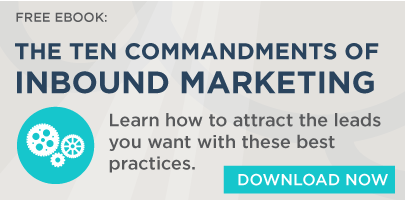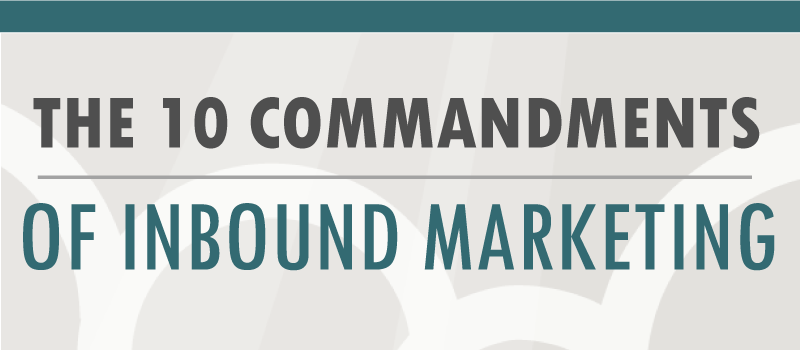Inbound Marketing Commandment #5: You Must Have Someone Responsible
As part of the LeadG2 series on "The 10 Commandments of Inbound Marketing" we will look at each of these ten commandments and why these principles...
2 min read
Shaye Smith
:
April 18, 2024


Understanding your audience is a top priority in B2B marketing. The foundation of successful inbound marketing lies in comprehending your target persona—the individual or group you’re aiming to engage, convert, and delight.
For an inbound marketing strategy to be successful, you must understand:
WHO you are speaking to
WHAT they want to know
WHEN they WANT to be spoken to
WHERE they are looking for information and answers
WHY you are qualified to give them answers
Digging into each of these points above will lay the path towards results so you aren’t wasting time and resources crafting campaigns or creating resources that fall flat because you put them in the wrong place or answered the wrong questions.
Understanding your target persona is the first step to inbound marketing success. Sharpen your focus and elevate your inbound game, starting with this first inbound marketing commandment: KNOW YOUR TARGET PERSONA.
As part of the LeadG2 series on "The 10 Commandments of Inbound Marketing," we discuss each of these ten commandments and their importance. Also, we share why these principles are ones that you need to abide by and can’t ignore.
Let’s dig into number one: Thou Shall Not Put Pen to Paper Before Conducting Research and Understanding Your Target Persona.
Before crafting content or launching campaigns, pause and reflect. Who is your ideal customer? What keeps them awake at night? What motivates their decisions? Dive deep into demographics, psychographics, and pain points. Remember, personas are not one-size-fits-all.
There might be subsets of your customers that lead to different target personas based on job seniority or industry.
Leverage data from CRM systems, website analytics, and social media platforms. Explore patterns, preferences, and behaviors. Identify commonalities among your best clients—the ones who sing your praises and drive revenue. These insights will shape your persona profiles.
Give your persona a name. Visualize them. What does their day look like? What challenges do they encounter? Humanize the data. Meet “Marketing Manager Mike” or “CEO Sarah.” These fictional characters represent real-world decision-makers.
What are their goals? Perhaps Mike aims to boost lead generation while Sarah grapples with shrinking budgets. Understand their pain points—the obstacles preventing them from achieving these goals.
Map out their buying journey. From awareness to consideration and decision, trace their steps. What content resonates at each stage? Tailor your messaging accordingly.
Empathy fuels effective marketing. Imagine you’re Marketing Manager Mike or CEO Sarah. What information would sway your decisions? What fears keep you up at night? Craft content that addresses these emotional triggers.
Align content with persona needs. Create blog posts, eBooks, webinars, and case studies that speak directly to their pain points at various stages of their buyer’s journey. Be their guide through their journey to decisions.
Segment your audience based on personas. Customize email campaigns, nurture sequences, and social media interactions. Ensure you’re delivering that segment’s answers or information where and when they want them.
Continuously refine your personas based on real-world interactions. Seek feedback from sales teams, customer service reps, and—most importantly—your customers.
Knowing your target persona isn’t a one-time exercise. It’s an ongoing and ever-evolving practice. As markets shift and preferences evolve, adapt your personas accordingly. Remember, behind every data point lies a human story waiting to be understood.
*Editor's Note: This blog has been updated since its original post date.

As part of the LeadG2 series on "The 10 Commandments of Inbound Marketing" we will look at each of these ten commandments and why these principles...

Many companies looking to implement a lead generation or inbound marketing program want to know the easiest and most cost-effective way to reach...

Most of us know by now that inbound marketing plays a crucial role in attracting and engaging potential customers. However, many businesses often...